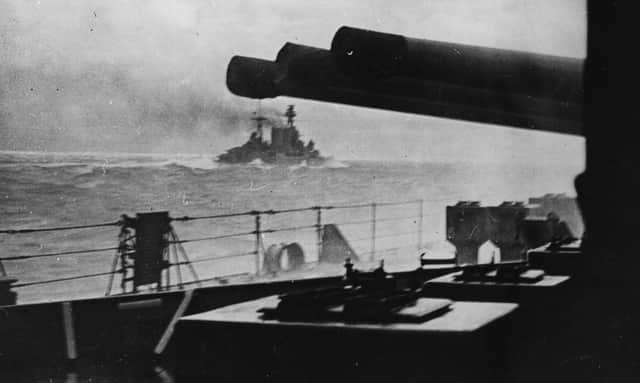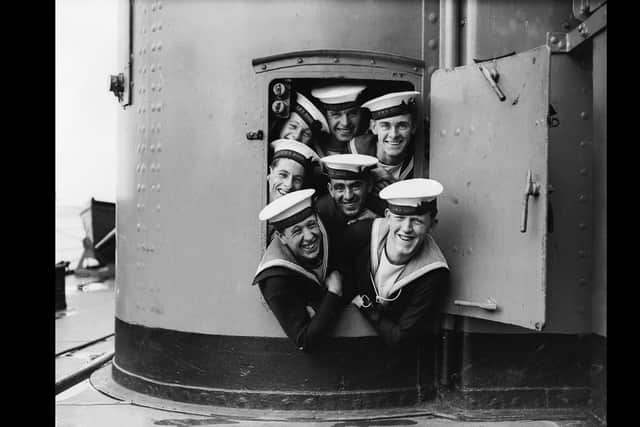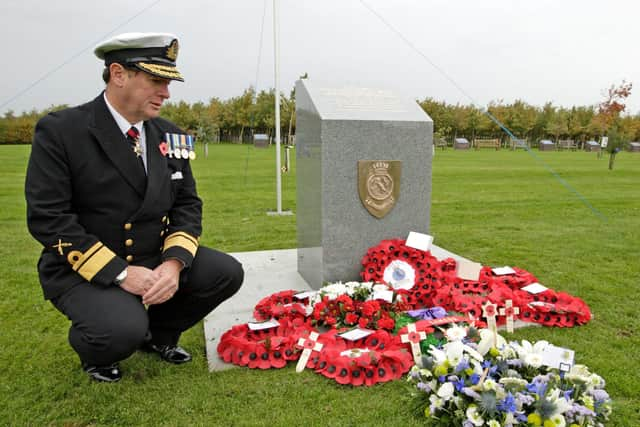HMS Hood: Devastating sinking of British flagship by German battleship Bismark and a heroic act of defiance should not be forgotten – Alex Cole-Hamilton MSP


Both were regarded as the flagships of their respective navies, so it is one of the most mythologised naval battles in history and my grandfather, Lieutenant Commander Tony Cole-Hamilton RN was there.
He was on watch on the bridge of the destroyer HMS Achates shadowing the pursuit and ready to provide assistance. By the time he passed away in 2010, he was one of the last surviving witnesses of the Hood’s sinking. It’s important to me that his recollection lives on.
Advertisement
Hide AdAdvertisement
Hide AdIt’s worth saying that at the time she was commissioned, Bismarck was the largest and most heavily armed battleship that ever put to sea.
The British admiralty rightly assessed that if she made it into the North Atlantic, she could cut off the supply routes to the UK from America, which would in turn starve the British people, giving the UK government no choice but to surrender.
This was just 18 months into WWII, America hadn’t entered the war and the prospect of invasion of the British mainland loomed large.
The Hood had been ordered into the Denmark Straight to stop the newly commissioned Bismarck from breaking out into the Atlantic. She had an escort of cruisers and destroyers, including my grandfather’s, and located the Bismarck in the Strait at about 5.30am on May 24, 1941.


Advertisement
Hide AdAdvertisement
Hide AdSea battles in those days were conducted from an astonishing distance. From a range of 14 miles, the Hood started firing at the German vessels.
With incredible accuracy she would send shells plunging at the enemy ships, and they would respond in kind. At a little before 6am, in a heavy blizzard, the Hood had yet to hit her target and Admiral Holland, the ship’s Commander, ordered a dramatic turn to port, bringing all Hoods guns to bear on Bismarck.
That turn proved fateful as it brought her into the path of a shell fired by Bismark, still over 10 miles away. At that range the shell plunged almost vertically through the Hood’s forward deck and into her ammunition magazine.
My grandfather described seeing two flashes in the snow, the initial explosion as the shell hit home and a second, much bigger flash as the forward magazine exploded.


Advertisement
Hide AdAdvertisement
Hide AdHood went down in minutes, but grandpa described witnessing a final act of heroism as the bow section of the stricken boat was vertical, moments before sinking, the gun crew fired their 15-inch gun straight into the air as an act of defiance. Moments later she went under with the loss of all but three hands.
My grandfather received a signal on the bridge of Achates from the HMS Prince of Wales who had also been engaged in the battle. It read “Hood sunk, am retiring”.
Only then did he realise the full enormity of what he’d just seen. For Britain, it marked very probably the lowest point in the whole of the war. A little while later, he was on watch again when he received a signal from the Admiralty, direct from Churchill himself to the entire fleet, saying only: “Find Bismarck and sink her.” They went on to do just that.
Alex Cole-Hamilton is Scottish Liberal Democrat MSP for Edinburgh Western
A message from the Editor:
Thank you for reading this article. We're more reliant on your support than ever as the shift in consumer habits brought about by coronavirus impacts our advertisers.
If you haven't already, please consider supporting our trusted, fact-checked journalism by taking out a digital subscription.
Comment Guidelines
National World encourages reader discussion on our stories. User feedback, insights and back-and-forth exchanges add a rich layer of context to reporting. Please review our Community Guidelines before commenting.
